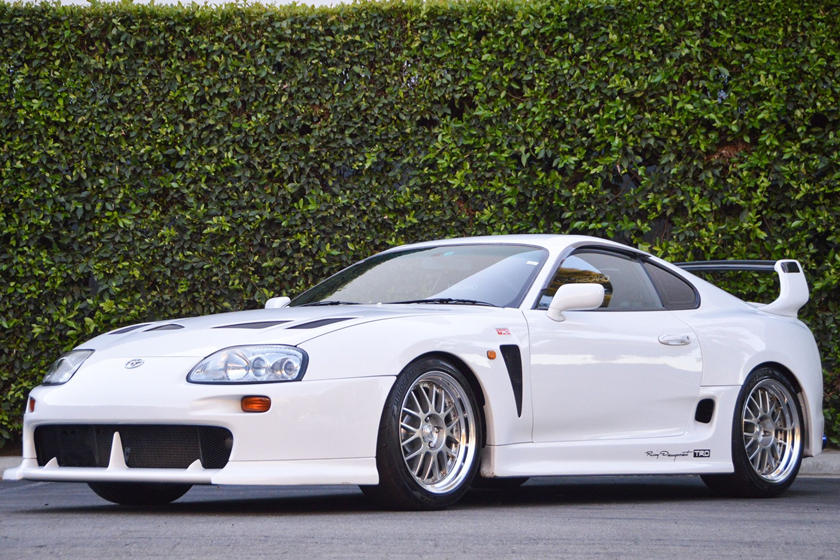How to Import a Car from Japan to USA

We are all familiar with cars that are manufactured in Japan or cars that spot Japanese brand names. As evidenced by Japanese efficiency and meticulousness, it is natural that Japanese cars are of the highest degrees in durability and longevity. Customers can always be assured when they use such high-quality products. The Japanese automobile market is now reaching USA, as the average American household is always in need of a reliable drive, and more often than not, that is the case for Japanese cars. But before that, we must address the question, how can we efficiently import cars from Japan to the USA?
In this post, we will arrange chronologically, along with general instruction, objective and our advice.
Planning
You want to import a JDM car into the US directly from Japan. There are countless persuasive reasons for your decision: sporty look, affordable price, sustainability,… but whatever it is, driving a JDM car on the US road is such an extremely interesting experience that everyone desires to try at least once. Now in order to have it imported to USA, here is what you need to know first:
The Import Country
Acknowledge the destination country is one of the most essential things when it comes to importing a car. Since different countries have different rules, norms of maintenance and caretaking, it is better to have some information about this. To import a car to the US, the car must pass the 25-year rule.
The Car Parts
Car owners need to make sure you can find the spare car components and the service for it in your area. It is a shame if you have the desired car but cannot repair it when needed.
The Possible Risks
Let’s be honest, there are still risks that we might have to deal with when importing a car online. We are talking about sending money overseas and hoping the automobile will return after a long time. So it is important to keep that in mind.
Another thing that customers need to remember is that the vehicle will most likely be shipped by ship. In some cases they will transport the car by plane but it is only for some specific vehicles. So it means the automobile may be damaged during the shipping process and there is nothing you can do to prevent that. So customers can buy insurance to be sure.
The Associated Cost
To be able to import a vehicle, these are the cost you need to know and prepare:
- Shipping cost
- Insurance cost
- Customs broker cost
- Duty cost
- State taxes or fee
- Tertiary shipping cost
- Vehicle forwarding cost
There are even more costs on the list, but these are the most essential costs that all importers need to acknowledge.
The Time
It is also essential to calculate the time required to finish all the process. From contacting the exporter to shipping, fund transferring, … Car owners need to count everything in order to save the value. The progress from receiving the automobile invoice to having license plates and one blunder from the state will take around 5 to 6 months. Just remember that everything will take time, so be patient.
Now you understand what needs to be prepared, we will proceed to the overview of the process.

Overview of How to Import a Car From Japan to USA
Find Cars on Export Websites
If you have ever shopped online, exporter’s websites usually have the same layout and structures with shopping platforms which allows buyers to filter what they want.
Compared with other Japanese used car websites, JDM Export is truly user-friendly, which makes the process of filtering, comparing and searching for items seem so effortless.
Another thing to understand is that most JDM available at an auction house are waiting to be bought, and exporters will buy those cars when there is a need.
After that, we come to the vetting progress in order to minimize the risk of being ripped off. There are a few things to remember when vetting:
JUMVEA
Jumvea is short for Japanese Used Motor Vehicles Exporters Association. We can use the exporter if he is a member of this association.
Phone Number
Buyers can check the real and fake exporters by checking this. Normally, the listed phone number will have 10 digits rather than 11 digits, since it is landline. If the website has a 11 digits phone number (mobile), do not trust them. Buyers should call them to verify if it is legit or not.
Research Online
This task can be done by simply search google on the exporter. You can find good or bad experiences with this exporter if there are reviews.
Salesman Name
Always, I repeat, always get the real name of your salesman. It is always good to know who you are dealing with, as well as how to contact the person in-charge for your case if anything happens.
Required Documents
Always ask the exporter for a copy of their Proof of Incorporation and Police Verification of Business. There are the basic requirements for any exporter and they must be ready to provide for your inspection. In case they hesitate or refuse to send these documents, drop them immediately.
Banking Information
Buyers need to make sure the banking information on JUMVEA’s site is matched with the info on the exporter’s website.
Contact Exporter and Get Invoice
Before getting to this step, make sure you already have a trustful exporter to get your car shipped. Now it is time to contact them. But before that, buyers need to finish a few things before asking for the invoice:
- Contact your Insurance company and make sure the vehicle can be insured if anything happens.
- The method to pay the Exporter. There are many cases that your bank does not have international wire transfers, so it is good to keep that in mind.
- Choose the Port you want to land the vehicle in.
- Decide whether to use a customs broker or not. Also check to see if you need an Auto Forwarding Service. If you need, inform them of your intentions early for the preparation.
- Check all the required registration and titling documents. If you are unsure, contact your state’s DMV.
- Decide if you are going to use JUMVEA’s service of secure money transfer. It usually costs around 200$.
- Search a place to clear the vehicle with Customs manually.
- Do you want your car to be inspected by the JAAI? It is not required in the US, so it is not necessary to.
- Have a form of federal identification (TWIC card) if you want to pick your car from the port by yourself. The ID card allows you to secure the infrastructure of the country as well as access critical. It costs around $125 fee.
- Decide on how you would move your car back home. If you drive it home, consider a Haynes service manual. This service manual is the save service since you might need to drive the vehicle home on the return trip from the port. Or else, you can rent a car dolly or trailer.
- Get more information about the car: Last but not least, you should ask more about your chosen vehicle before asking for the invoice since this is the best source of car information.
Alright, now you can ask for the vehicle invoice. It is most likely that you need to wait 48 hours (If you use “Car From Japan” as an exporter) since they need to hold the vehicle with the auction house. After receiving the pdf voice file, ensure that the invoice is itemized to avoid paying duty and state registration taxes which are usually around a few hundred dollars.
Transfer Funds to Exporter
After carefully checking the invoice, you should transfer the funds to the exporter. Remember to always keep your salesman updated with screenshots. The confirmation, forwarded emails,… are really crucial so always take screenshots of those.
Shipping Process
If you already reached this step, there is pretty much nothing you need to do right now. Next, the exporter will purchase the car, prepare the export certificates. Along with that, they will also book shipping, transport, ready for inspections, and send you the electronic copies of your required documents. So basically, you just need to be patient and wait for any new updates from the salesman you are working with.
In those papers, the Bill of Lading is the most crucial one, so give it a careful check to make sure all the details are correct.
After all the preparations and checking, the ship will depart your car to the Port of Origin. And shortly after departure, the exporter will send you all the required documents contains:
- One or two original copies of BL (Bill of Lading)
- Original copy of itemized invoice.
- JAAI inspection certificate.
- Original copy of the Export Certificate.
- The remaining documents about vehicles like car manuals,…
And over the next 2 to 6 weeks, you cars will travel across the sea. You can check the journey using online sea vessel trackers, and contact the shipping company for more information.
You should complete and print out NHTSA HS-7 and EPA FORM 3520. These documents are not for clearing the car. However, they should come along with you in case there are any unclear sections of the form, as well as register the vehicle with the state government. For those reasons, bring them along with your important documents.
No one wants the vehicle to wait too long in the port since it will cost fees if the car sits there more than 10 days. Or worse, after another few more days, the car will be delivered to the CBP custody. So buyers should call the shipping company to get the notice of Arrival to bring along.
Car Clear Customs
Alright, now the car is located at the US port, and you took care of all the fees. At this time, if you have a customs broker, he will pick up the vehicle as well as bring it to your desired location. However, if you don’t have one, you need to do a manual clearance with Customs as well as Border Protection. These are the time the crucial documents, as well as Notice of Arrival will become handy.
Receive the Vehicle and Register State Level
Only one last step remaining from getting up to the freeway: Receive the car and register the State Level. If everything goes smoothly, you can get the license plates in a reasonable amount of time.





